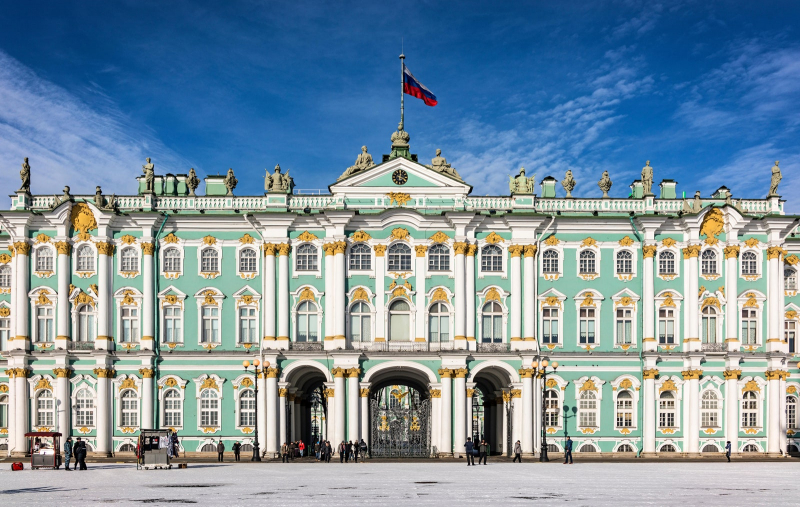The Winter Palace
The Winter Palace is a palace in Saint Petersburg that served as the Russian Emperor's formal home from 1732 to 1917. The Hermitage Museum presently occupies the palace and its environs. The current and fourth Winter Palace was erected and altered practically continually between the late 1730s and 1837, when it was badly damaged by fire and promptly rebuilt, between Palace Embankment and Palace Square, adjacent to the site of Peter the Great's initial Winter Palace. The storming of the palace in 1917 became an iconic emblem of the Russian Revolution, as shown in Soviet art and in Sergei Eisenstein's 1928 film October.
The emperors built their palaces on a grand scale in order to reflect Imperial Russia's greatness and authority. By the end of the nineteenth century, the tsars governed over 22,800,000 square kilometers and 125 million subjects from the palace. The Winter Palace was designed in what became known as the Elizabethan Baroque style by several architects, most notably the Italian Bartolomeo Rastrelli (1700–1771). The green-and-white palace is an elongated rectangle with the main façade that is 215 meters (705 feet) long and 30 meters (98 feet) high. The Winter Palace is said to include 1,886 doors, 1,945 windows, 1,500 rooms, and 117 stairs.
When demonstrators marched toward the Winter Palace in 1905, the Imperial Family had decided to live at the more secure and secluded Alexander Palace at Tsarskoe Selo, returning to the Winter Palace exclusively for formal and state occasions. Following the February Revolution of 1917, the palace served as the seat of the Russian Provisional Government, which was eventually led by Alexander Kerensky. Later that year, a squad of Red Guard soldiers and sailors attacked the palace, ushering in the Soviet state.
Location: Saint Petersburg, Russia











